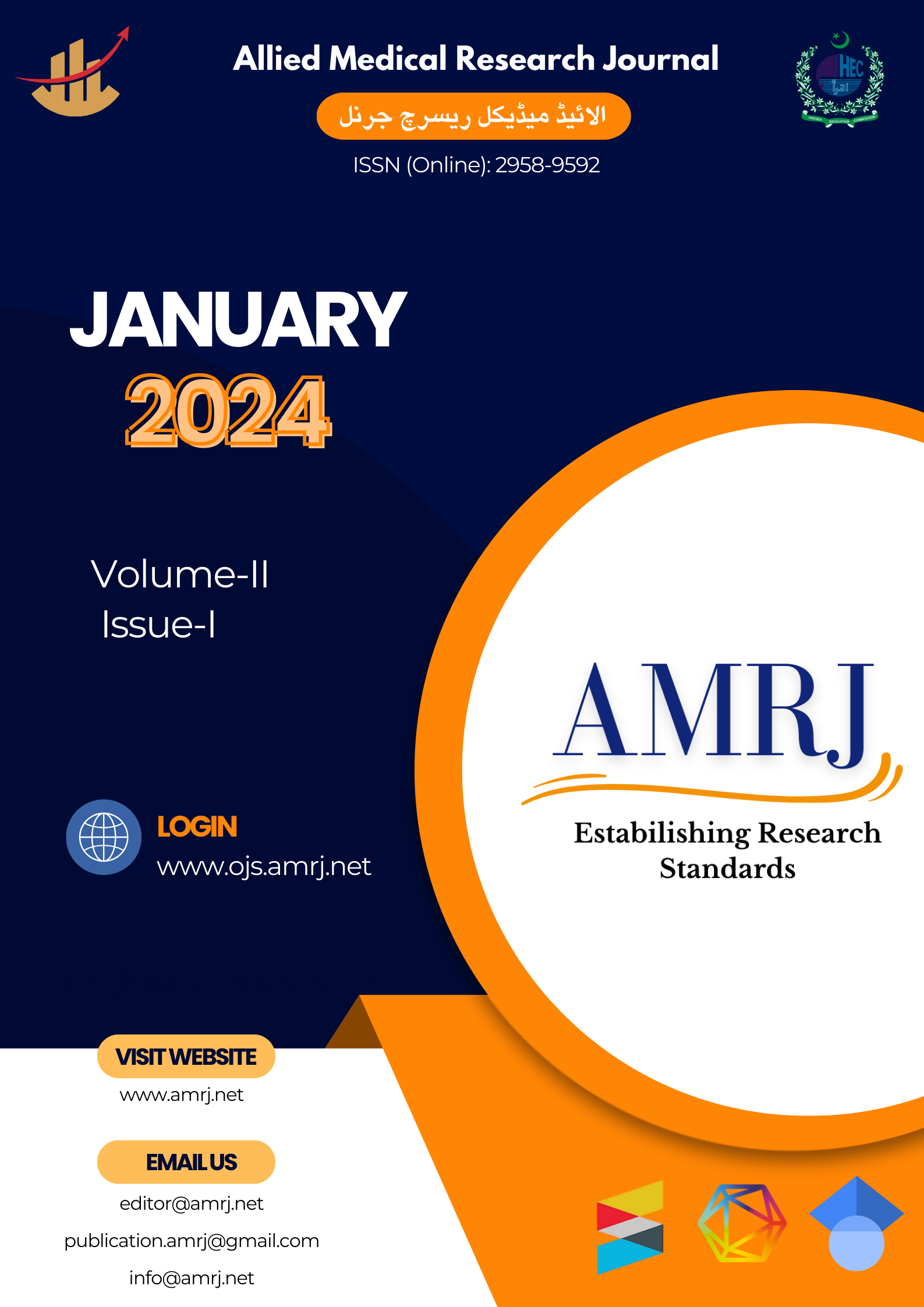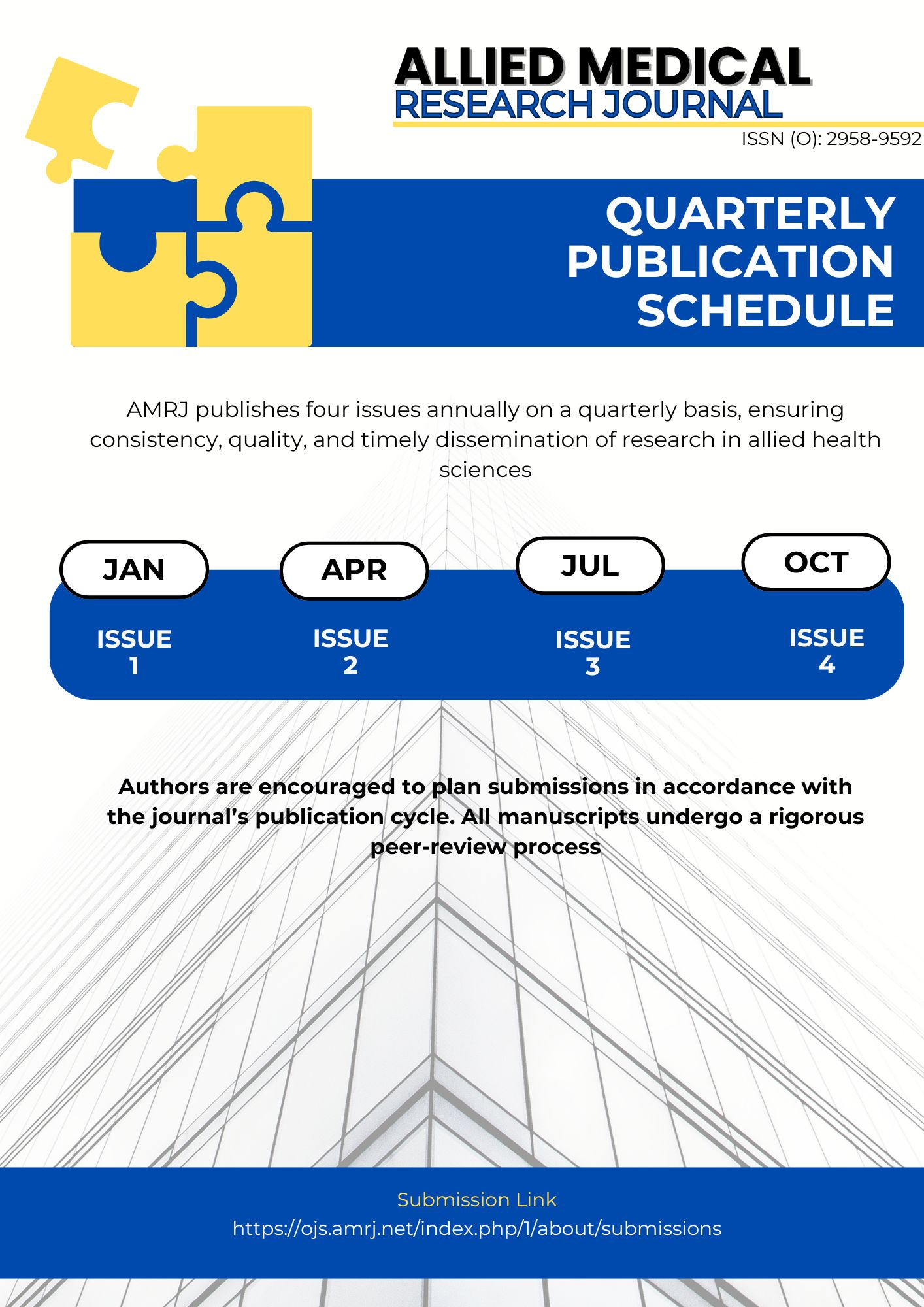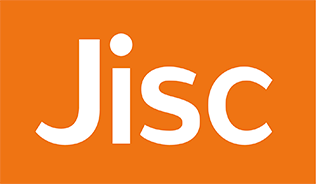Factors Affecting Patient Compliance with Upper Limb Bracing Following Physical Therapy
Keywords:
Compliance, Non-Compliance, Orthotics, Orthoses PhysiotherapyAbstract
Background: The lack of patient compliance with upper limb bracing results in delayed healing, progression of deformity, and sometimes even permanent disability. Common upper limb musculoskeletal disorders require bracing and physical therapy, but patient non-compliance with bracing is widespread. The study aims to identify the factors that result in non-compliance with upper limb bracing following physical therapy, thus affecting the patient’s recovery from injury.
Methods: A cross sectional descriptive study on total of 300 patients between ages 20-50 was conducted at Centre of Benzair Bhutto Hospital. A self-designed questionnaire was used to evaluate the history and factors affecting patient compliance. Orthotic Prosthetic user survey form was used to assess non-compliance with the brace.
Results: Out of a total of 300 patients, 100 (33.3%) subjects correctly used the brace, 115 (38.33%) subjects did not use the brace, and 85 (28.33) subjects used the brace but did not use it as advised by the orthodontist. Out of 115 non-users, 75 patients could not afford the brace, and 40 patients thought they were improving with physiotherapy, so there was no need to use the brace. The most common factors affecting patient compliance with bracing following physiotherapy are either the brace being uncomfortable (36.4%) or discomfort at night (18.8%).
Conclusion: Patient’s compliance was reported following physiotherapy, though the participants were reluctant to use the brace due to high cost and discomfort. Efforts to decrease the cost of brace, and discomfort may be beneficial in increasing compliance with bracing treatment following physiotherapy.
References
Jones PS, Uustal H. Spinal Orthoses: Principles, Designs, Indications, and Limitations. Website, University of Missouri. 2021:1-42.
Kumar A, Jadav V. Orthoses in Spinal Cord Injury Rehabilitation Management and Improving Quality of Life. InSpinal Cord Injury-Current Trends in Acute Management, Function Preservation and Rehabilitation Protocols 2023 Feb 8. IntechOpen.
Marcotte D, Ferri E, Xue X, Katsolis A, Rajotte E, Cardiff K, Preuss R. Barriers and facilitators to lower extremity orthotic compliance in the pediatric population: a scoping review of the literature. Prosthetics and Orthotics International. 2023 Apr 1;47(2):155-67.
Ozden E, Guler M. Comparison of conservative treatment of lateral epicondylitis with wrist splint and epicondylitis band: assessing patient compliance and clinical outcomes.
Nassif M, Haddad C, Habli L, Zoghby A. Materials and manufacturing techniques for occlusal splints: A literature review. Journal of Oral Rehabilitation. 2023 Nov;50(11):1348-54.
Roh YH, Lee BK, Park MH, Noh JH, Gong HS, Baek GH. Effects of health literacy on treatment outcome and satisfaction in patients with mallet finger injury. J Hand Ther. 2016;29(4):459–64.
Altan E, Alp NB, Baser R, Yalçın L. Soft-tissue mallet injuries: a comparison of early and delayed treatment. J Hand Surg. 2014;39(10):1982–5.
Swinnen, E. C Lafosse, J. Van Nieuwenhoven, S. Ilsbrouk, D. Beckwee, and E. Kerckhof. 2015. neurological patients and their lower limb orthotics: an observational study about acceptance and satiisfaction. Prosthetics orthotics international.
Ale Peeters CM, van Hasselt AJ, Wapstra FH, Jutte PC, Kempen DH, Faber C. Predictive factors on initial in-brace correction in idiopathic scoliosis: a systematic review. Spine. 2022 Apr 15;47(8):E353-61.
Brooksbank K, Jenkins PJ, Anthony IC, Gilmour A, Nugent MP, Rymaszewski LA. Functional outcome and satisfaction with a “self-care” protocol for the management of mallet finger injuries: a case-series. J Trauma Manag Outcomes. 2014;8(1):21.
Vernucci RA, Mazzoli V, Incisivo V, Guarnieri R, Cascone P, Barbato E, Silvestri A, Galluccio G. Factors affecting duration of post-surgical orthodontics in the Surgery First/Early Approach: A retrospective study. Journal of Stomatology, Oral and Maxillofacial Surgery. 2023 Feb 1;124(1):101323.
Sala F, D’Urso G, Giardini C. Customized Wrist Immobilization Splints Produced via Additive Manufacturing—A Comprehensive Evaluation of the Viable Configurations. Prosthesis. 2023 Aug 26;5(3):792-808.
Mary Vining Radomski; Catherine A. Trombly Latham (2008). Occupational therapy for physical dysfunction. Lippincott Williams & Wilkins. pp. 430
David J. Slutsky; Daniel J. Nagle (2007). Techniques in wrist and hand arthroscopy. Elsevier Health Sciences. pp. 52–. ISBN 978-0-443-06697-9.
Stover, John; Jeff Skouta (2010). Leading and Trusted Wristbands Brands. Australia: University of Australia.
Saccomanno S, Saran S, Laganà D, Mastrapasqua RF, Grippaudo C. Motivation, perception, and behavior of the adult orthodontic patient: a survey analysis. BioMed Research International. 2022 Mar 4;2022.
Stefanovic NL, Uhac M, Brumini M, Zigante M, Perkovic V, Spalj S. Predictors of patient compliance during Class II division 1 malocclusion functional orthodontic treatment. The Angle Orthodontist. 2021 Jul 1;91(4):502-8.
Jung MH. Factors influencing treatment efficiency: A prospective cohort study. The Angle Orthodontist. 2021 Jan 1;91(1):1-8.
Kattan AE, AlHemsi HB, AlKhawashki AM, AlFadel FB, Almoosa SM, Mokhtar AM 2nd, Alasmari BA. Patient Compliance With Physical Therapy Following Orthopedic Surgery and Its Outcomes. Cureus. 2023 Apr 6;15(4):e37217. doi: 10.7759/cureus.37217. PMID: 37159781; PMCID: PMC10163936.
Karol LA, Wingfield JJ, Virostek D, Felton K, Jo C. The influence of body habitus on documented brace wear and progression in adolescents with idiopathic scoliosis. Journal of Pediatric Orthopaedics. 2020 Mar 1;40(3):e171-5.
Grubhofer F, Gerber C, Meyer DC, Wieser K, Ernstbrunner L, Catanzaro S, Bouaicha S. Compliance with wearing an abduction brace after arthroscopic rotator cuff repair: A prospective, sensor-controlled study. Prosthet Orthot Int. 2019 Aug;43(4):440-446. doi: 10.1177/0309364619837794. Epub 2019 Mar 21.
Mercurio M, Castioni D, de Filippis R, De Fazio P, Paone A, Familiari F, Gasparini G, Galasso O. Postoperative psychological factors and quality of life but not shoulder brace adherence affect clinical outcomes after arthroscopic rotator cuff repair. Journal of Shoulder and Elbow Surgery. 2023 Mar 30.
Wang H, Meng X, Tetteroo D, Delbressine F, Xing Y, Ito K, Hai Y, Markopoulos P. Exploration of Contributory Factors to an Unpleasant Bracing Experience of Adolescent Idiopathic Scoliosis Patients a Quantitative and Qualitative Research. Children (Basel). 2022 Apr 28;9(5):635.
Gornitzky AL, England P, Kiani SN, Yellin JL, Flynn JM. Why don’t adolescents wear their brace? a prospective study investigating psychosocial characteristics that predict scoliosis brace wear. Journal of Pediatric Orthopaedics. 2023 Jan 31;43(1):51-60.
Moresca R. Orthodontic treatment time: can it be shortened? Dental Press J Orthod. 2018 Nov-Dec;23(6):90-105.

Downloads
Published
Issue
Section
License
Copyright (c) 2024 Hufsa Shahzad, Zia Ur Rehman, Shazia Asif

This work is licensed under a Creative Commons Attribution-NonCommercial 4.0 International License.








